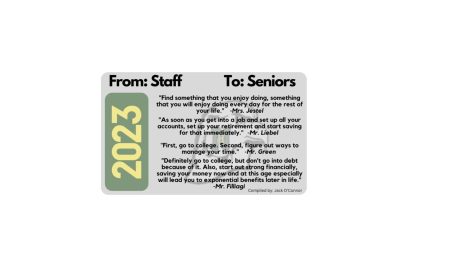Students crave real world lessons Taxes, credit lessons needed
March 22, 2022
According to National Geographic, the first school to ever be created in the United States was in 1635. In 1837, Horace Mann came up with what is today the public school system. This system teaches high school students creative, critical, and mathematical thinking. However, there needs to be a financial skills class, where students learn about taxes and credit, for the sake of adulthood.
In the United States, one third of households with income below $55,000 paid a tax professional to file their taxes, because they could not do it themselves, according to Bankrate.com. Understanding how taxes get filed can help a person take greater control of their money, especially if done right. Furthermore, it would get rid of the burden of paying someone, once tax refund checks come in the mail. Moreover, 46 percent of Americans do not know what tax bracket they are in. Why is this important? A higher tax bracket means more deductions.
The school system in the United States does not teach kids to survive in the adult world. For example, how important credit scores are to be able to make a big purchase, such as a car, a house, and in most cases renting an apartment. When getting a loan out of the bank, the first thing they look at is credit score. When borrowing money from credit card companies, that money needs to be paid back, and usually with interest. This is where it becomes tricky, because if that money is not paid back on time, debt builds up.
Credit experts usually recommend spending below 30% when it comes to credit, but not everyone is taught that, and that’s what needs to change.
What else is not taught in school but should be? Car repair. What to do in emergency situations, such as if a student’s car breaks down, or a tire is blown out. While parents are usually the ones who teach their children how to manage these things, some teenagers are not exposed to this kind of information. Whether that is because their parents are absent, or are not informed themselves. Michelin and the Fédération Internationale de l’Automobile surveyed 1,001 teens, and found out that 52 percent of U.S. teens ranging from 15 to 17 years old “don’t know how to replace a tire.” A total of 44 percent “don’t know how to examine the tire tread depth,” and 32 percent “can’t figure out how to check tire pressure.”
The issue with this is that even though there is driver’s education required for teens to be able to obtain a license, these lessons are short. If car repair classes were taught in school, accidents could further be prevented.










